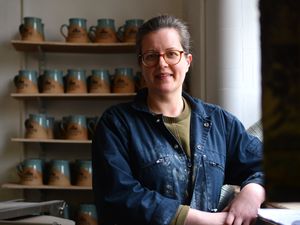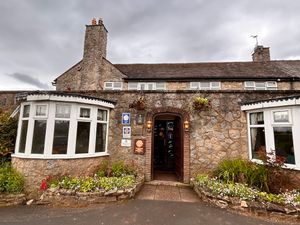Meet the willow weaver taking on ancient tradition in a contemporary setting
Willow weaving has been part of British heritage for centuries.
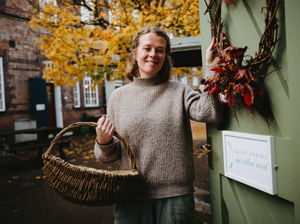
Daisy Askins first fell in love with this ancient craft five years ago and now creates sculptures and basketry using natural materials.
In her studio at Maws Craft Centre in Jackfield, Ironbridge, she works mainly with vine, willow and wood.
“Basket-making is one of the oldest forms of crafts and it’s practised all over the world,” says Daisy.
“We’re still using the same techniques that were used hundreds of years ago.
“I like being rooted in that tradition but also reimagining it in a contemporary setting.”
The 31-year-old previously worked in landscape architecture and specialised in project managing heritage landscape restoration and community engagement projects, working across the UK with private and public sector organisations and grant funding bodies.
Keen to spend more time outdoors, she started running craft and wellbeing projects for adults and children in the Wyre Forest.
“I wanted to get out from behind the laptop and more into nature,” explains Daisy, who lives in Ironbridge.
To learn the skills she needed to deliver the workshops, she attended short courses in a variety of crafts including willow weaving.
“I fell in love with it,” she says. “The course was run by Sarah at Hopewood Baskets in Wyre Forest, she’s a professional basket-maker.”
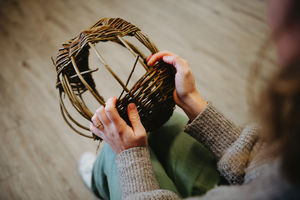
Daisy threw herself into the craft, learning as much as she could and taking on a number of different projects.
She is now studying at Westhope College, near Craven Arms, which offers City & Guide courses in Basketry Level 2 and also Basketry Level 3 – the latter is exclusive to the college.
“Shropshire has quite a thriving basket making community and a lot of it is due to Westhope College and the courses they offer,” explains Daisy.
She has recently moved into a new studio – Vine Willow Wood – at Maws Craft Centre and says she is enjoying being part of a community of makers. “It’s really inspiring to be surrounded by so many craftspeople who make a living from what they can do with their hands,” adds Daisy.
Although she primarily works with willow, Daisy also incorporates vines and wood into her designs.
“My family luckily own a vineyard, Astley Vineyard in Worcestershire, and I use the grape vine prunings in some of the sculptural and artistic projects,” explains Daisy.
“There are two ways to work with willow. There is living willow which is harvested and rather than letting it dry, if the rods are planted in the ground as part of a sculpture, they will start to grow again. It’s great for pollinators.
“We can also work with dried willow which is harvested and left to dry for a few months. Before you can work with it, the willow rods need to be soaked so they become pliable and flexible again. The general rule is that it’s a day of soaking for every foot of length, so four feet would need four days. But willow is a natural material and it doesn’t always stick to the rules so it can take longer,” explains Daisy who sources her willow from the Somerset Levels.
“I would love to grow my own willow one day – that’s a long-term dream of mine,” she adds. Earlier this year, Daisy created a living willow sculpture in Lawley Community Garden as part of the King’s coronation celebrations.
“It’s really nice because it’s now a place where people can sit,” she explains. Daisy then went on to be awarded an artist residency at the New Art Gallery Walsall as part of a commission with the Bumblebee Conservation Trust to create a sculpture trail in a park in Walsall.
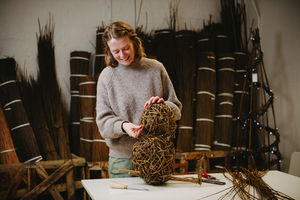
And she has also recently started a project with Bournville Village Trust to create a sculpture at the Squatters Cottage in Lightmoor to celebrate the wildlife and heritage of the area.
As well as public sculpture commissions, Daisy runs a programme of workshops where she teaches people the tools and techniques of willow weaving. Participants in her next workshop on Sunday, November 19, will learn the techniques they need to make their own willow reindeer sculpture. Daisy is a strong believer in the therapeutic benefits of creativity and working with natural materials.
“There is something very relaxing and restorative about working with willow,” she says.
“Maybe it’s because it’s a really repetitive technique. It’s very mindful. You have to absorb yourself in the craft.”
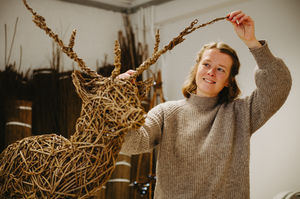
“There is something really satisfying about taking a pile of sticks and turning them into something that’s really beautiful and quite functional,” adds Daisy.
Daisy is holding monthly open studio events and the next one will take place on Saturday, December 16. She will have a small selection of items for sale and information about her workshops and community projects.
For the full list of workshops, visit vinewillowwood.co.uk.



